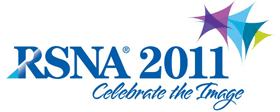
Abstract Archives of the RSNA, 2011
Ilhan Lim MD, Presenter: Nothing to Disclose
Joon Yeun Park, Abstract Co-Author: Nothing to Disclose
Ji Ae Park, Abstract Co-Author: Nothing to Disclose
Woo Chul Noh, Abstract Co-Author: Nothing to Disclose
Hyun-Ah Kim, Abstract Co-Author: Nothing to Disclose
Eun Kyu Kim, Abstract Co-Author: Nothing to Disclose
Eun Sook Ko MD, Abstract Co-Author: Nothing to Disclose
Seung Sook Lee, Abstract Co-Author: Nothing to Disclose
Kyeong Min Kim, Abstract Co-Author: Nothing to Disclose
Gi Jeong Cheon, Abstract Co-Author: Nothing to Disclose
Byung Il Kim, Abstract Co-Author: Nothing to Disclose
Chang Woon Choi, Abstract Co-Author: Nothing to Disclose
Sang Moo Lim, Abstract Co-Author: Nothing to Disclose
The aim of this study was to determine whether PET-MRI could predict early response to neoadjuvant chemotherapy (NAC) in advanced breast cancer using various functional parameters.
We prospectively recruited 49 female patients (mean age, 46.2 y; median age, 46 y; age range, 26-68 y) with locally advanced breast cancer (mean diameter, 4.0 cm; median diameter, 3.5 cm; diameter range, 0.8-13.5 cm) from August 2009 to November 2010. All patients underwent 3 cycles of NAC. Before the 1st NAC (#1), before the 2nd NAC (#2), before the 3rd NAC (#3), and before surgery (#4), all patients underwent parallelly installed PET/CT-MRI: whole body FDG PET/CT, breast MRI, and delayed breast PET/CT sequentially in prone position. MRI consisted of T2, diffusion weighted image (b values, 0 and 800 sec/mm2), and dynamic enhanced MRI. All patients were taken surgery after completion of NAC. Each tumor was analyzed by 7 parameters: maxSUV at early and delayed PET (SUV1h, SUV2h), relative ratio of maxSUV to baseline (cSUV1h, cSUV2h), size, and apparent diffusion coefficient (ADC), and steepest slope of the enhancement curve (SS). Treatment response was evaluated according to Sataloff’s scale considering microscopic viability. Each parameter was compared between responders and nonresponders using Mann-Whitney test.
From pathologic assessment after surgery, 20 (41%) patients responded and 29 (59%) patients did not. Only ADC tended to increase after NAC, but other parameters were likely to decrease. Both cSUV2 (0.36±0.21) and SS (0.63±0.37) of responders were significantly lower than those of nonresponders (cSUV2;0.56±0.23, SS;0.88±0.27) (P=.0024; P=.0036) at #2. ADC (1.334±0.219×10-3 mm2/sec) of responders was significantly higher than that of nonresponders (1.182±0.267×10-3 mm2/sec) (P =.046) at #2. On the contrary, no parameter at #1 showed significant difference between two groups. The best cSUV2, SS cutoff for differentiating between responders and nonresponders at #2 were 0.6, 0.8 respectively, which yielded a sensitivity of 70% and a specificity of 72%.
The PET-MR can predict treatment response just after first cycle of neoadjuvant chemotherapy in breast cancer by integration of functional parameters.
Early prediction of response to neoadjuvant chemotherapy using functional parameters from PET-MR in patients with breast cancer may optimize treatment and avoid ineffective toxic chemotherapy.
Lim, I,
Park, J,
Park, J,
Noh, W,
Kim, H,
Kim, E,
Ko, E,
Lee, S,
Kim, K,
Cheon, G,
Kim, B,
Choi, C,
Lim, S,
Prediction of Early Response to Neoadjuvant Chemotherapy in Advanced Breast Cancer Using Parallelly Installed PET/CT-MRI. Radiological Society of North America 2011 Scientific Assembly and Annual Meeting, November 26 - December 2, 2011 ,Chicago IL.
http://archive.rsna.org/2011/11014697.html

